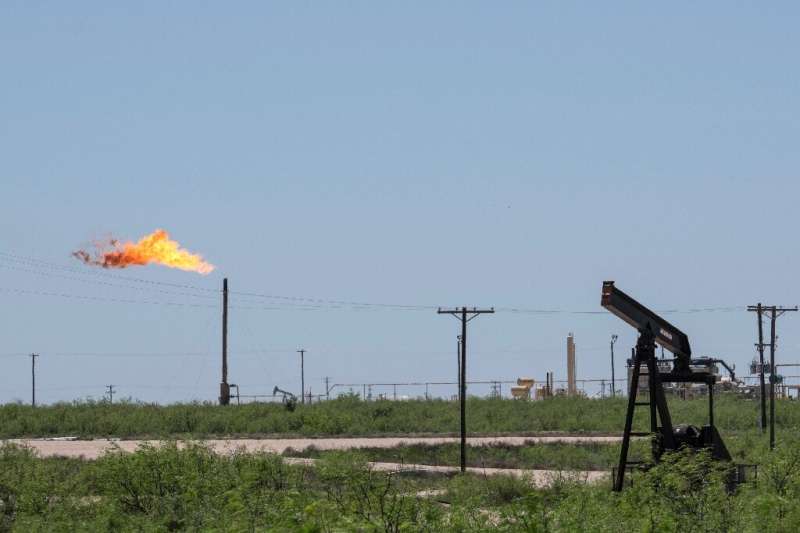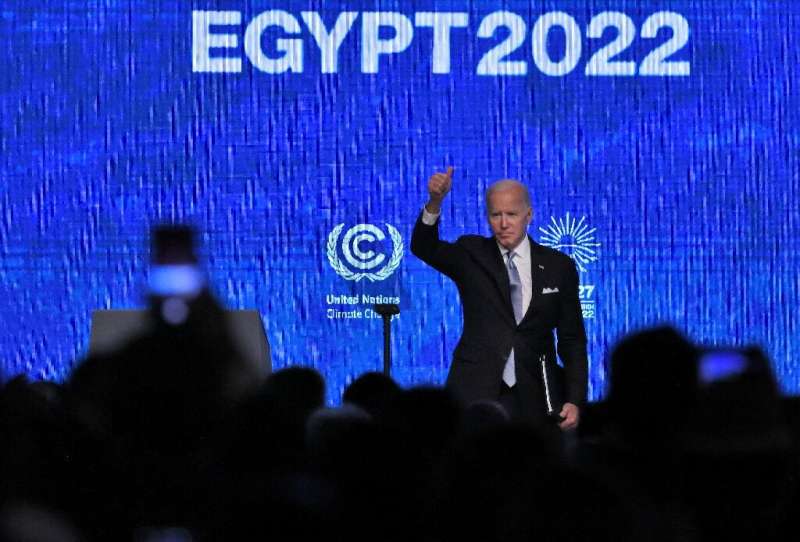US targets fossil fuel 'super-emitters' of methane

On the hunt for the methane "super-emitters", US President Joe Biden on Friday unveiled a plan to plug oil and gas leaks and tighten regulation as several global emitters vowed to step up efforts to slash pollution of the powerful greenhouse gas.
Methane, released from the oil and gas, waste and agriculture sectors as well as through natural processes, is responsible for roughly 30 percent of the global rise in temperatures to date.
Dozens of countries have signed up to cutting their emissions of the short-lived but potent gas by a third this decade and Biden said this could be "our best chance" to meet the Paris climate deal's more ambitious goal of limiting warming to 1.5 degrees Celsius.
"We have to make vital progress by the end of this decade," he told an audience at COP27 in the Egyptian seaside resort of Sharm el-Sheikh.
With recent data showing methane concentrations in the atmosphere made their biggest increase on record in 2021, the United States, the European Union, Japan, Canada, Norway, Singapore and Britain signed an agreement committing to "immediate action to reduce the greenhouse gas emissions associated with fossil energy production and consumption".
They also vowed to minimise flaring—burning off unwanted natural gas from oil and gas wells—and to minimise methane and carbon dioxide "across the value chain to the fullest extent practicable, while also working to phase down fossil fuel consumption", according to a statement from the EU.
'Hot spots'
Biden pledged to invest more than $20 billion in cutting emissions in the United States, including improving equipment and capping leaks in the oil and gas industry.

He also touted "strong regulatory actions" from the country's Environmental Protection Agency, which, if finalised, would toughen up standards for methane and other harmful air pollutants.
This was "especially from super emitters", he said, referring to a programme that would require operators to respond to credible third-party reports of high-volume methane leaks.
Earlier this week, the newly-launched TRACE satellite monitoring project said the top 14 largest emitters are all oil and gas extraction sites.
And of those, the biggest emitter on the planet is the Permian Basin in Texas—one of the largest oilfields in the world—said former US vice president Al Gore, a project founder.
On Friday, the UN Environment Programme unveiled its satellite-based Methane Alert and Response System (MARS), which will use data from global mapping satellites to detect methane "hot spots" and large plumes of the gas, and identify their source.
'Game changer'
Biden said the measures announced Friday would enable the US to reduce its emissions from covered sources by 87 percent below the levels of 2005, by 2030.
At last year's COP26 climate summit in Glasgow, more than 100 nations agreed under the Global Methane Pledge to reduce emissions 30 percent by 2030, spearheaded by the US and European Union.

But several major methane emitters—including China, Russia, Iran and India—failed to sign.
That figure has grown to 130, Biden said Friday, adding it was a "game changer".
Governments have zeroed in on emissions of methane, which lingers in the atmosphere only a fraction as long as CO2, but is far more efficient at trapping heat. Levels of the gas are their highest in at least 800,000 years.
European Commission President Ursula von der Leyen said countries working together could reduce warming by 0.1C by mid-century, adding "every fraction of a degree counts in our fight to preserve our planet for future generations".
Rachel Cleetus, lead economist at the Union of Concerned Scientists' climate programme, said the swathe of new announcements on methane "are critical" to addressing planet-heating methane pollution.
"We urgently need better tracking of methane emissions and stronger rules to reduce these emissions," she said.
The International Energy Agency has decried the enormous amount of methane that leaks from fossil fuel operations, estimating the amount lost last year globally was broadly similar to all the gas used in Europe's power sector.
In October, NASA said a methane plume about two miles (3.3 kilometres) long was detected southeast of Carlsbad, New Mexico, in the Permian Basin.
© 2022 AFP





















